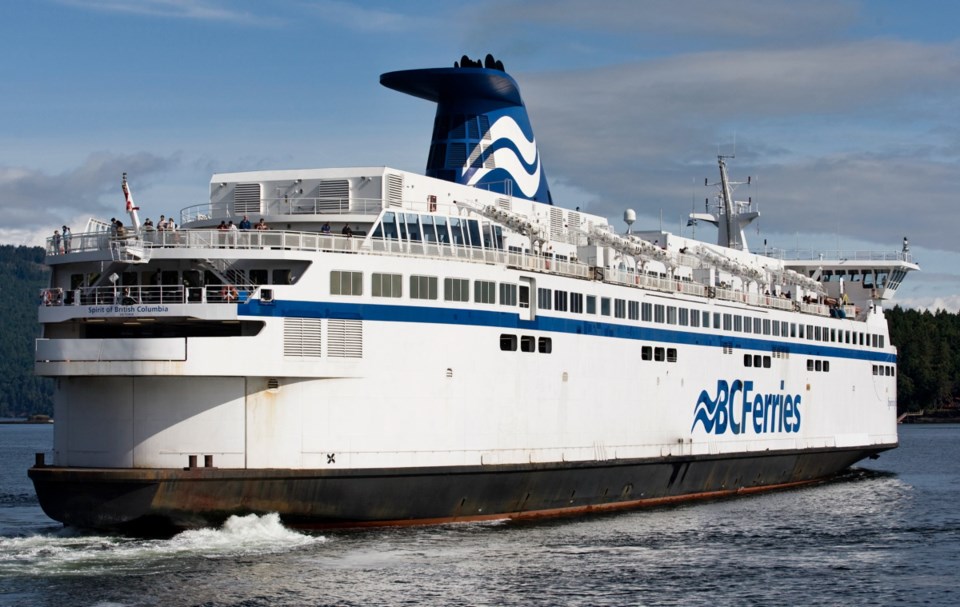When the Spirit of British Columbia ferry comes into service today, it will be relying on liquefied natural gas as fuel.
Diesel will be on board but only as backup.
The 548-foot-long ferry is serving on its regular route between Swartz Bay and Tsawwassen after a mid-life upgrade and conversion to LNG by Remontowa Ship Repair Yard S.A., in Gdansk, Poland.
“The Spirit of British Columbia returns to service with clean technology that reduces both our environmental footprint and cost of operations,” Mark Collins, B.C. Ferries president and chief executive officer, said in a Tuesday statement.
Using LNG on the Spirit-class ferries means carbon dioxide emissions will be cut by 12,500 tonnes every year. That is the equivalent of taking 2,500 cars off the road.
It will also cut fuel costs by millions of dollars once both Spirit ferries are running on natural gas, B.C. Ferries said.
This is the first of the two Spirit-class ferries to undergo an LNG conversion in Europe. The Spirit of Vancouver Island leaves B.C. this fall and returns in 2019.
Total budget for work on the two vessels is expected to be $140 million.
B.C. Ferries said Spirit of British Columbia is the first vessel in the world to refuel LNG through delivery on a fully enclosed vehicle deck. Tanks holding LNG are secured below the car decks. They are refilled when the ferry is not in service by FortisBC trucks carrying LNG, said B.C. Ferries spokeswoman Deborah Marshall.
Salish-class ferries also run on LNG but the delivery trucks pull in to an open vehicle deck.
B.C. Ferries said the delivery system for the LNG vessels was designed, built and installed by the company and its partners. This innovation saved more than $100 million in infrastructure costs that would have otherwise been required for an on-land facility, the company said.
Other improvements include renewing navigation and propulsion equipment, such as gearboxes, rudders, steering system, bow thrusters, propeller blades and four marine evacuation systems. The ship has more efficient air conditioning equipment that will reduce energy consumption.
The ship’s interior has been spruced up, with new carpets, upholstered furniture, and table tops. Washrooms have been upgraded and one was added to deck five. A new Arbutus Coffee Bar was introduced on deck six and the gift store has doubled in size.



